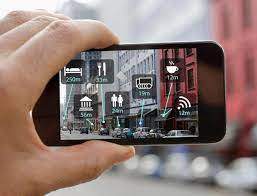Introduction
In the dynamic landscape of marketing, one technology has been making waves – Augmented Reality (AR). As we navigate the digital age, the fusion of the physical and virtual worlds is redefining how businesses connect with their audience. Let’s delve into the exciting realm of AR and explore its future implications in marketing.
Understanding Augmented Reality
Augmented Reality, in its essence, overlays digital information onto the real world, creating a blended experience. From mobile apps to smart glasses, AR has found applications in gaming, healthcare, education, and more. This section will provide a comprehensive understanding of AR and showcase its versatility.
Evolution of Marketing Strategies
Traditional marketing methods are evolving to keep pace with the digital era. With consumers seeking more immersive experiences, the focus is shifting towards technologies like AR. We’ll explore how this shift is transforming marketing strategies, making them more engaging and interactive.
Impact of AR on Consumer Engagement
The key to successful marketing lies in capturing the audience’s attention. AR enhances consumer engagement by offering immersive experiences. Discover how brands leverage AR to create memorable interactions, fostering brand loyalty and customer satisfaction.
AR in Product Presentation
Gone are the days of static product displays. AR is changing the game by allowing customers to virtually try products before purchasing. Whether it’s trying on clothes or test-driving a car, AR is revolutionizing how products are presented to consumers.
Interactive Advertising with AR
Engaging advertisements are crucial in a crowded market. AR brings a new dimension to advertising by allowing users to interact with content. We’ll explore successful AR marketing campaigns and how interactivity boosts brand awareness.
Challenges and Opportunities
While AR presents exciting possibilities, challenges such as user privacy and technology limitations need addressing. This section will delve into both the challenges and opportunities, encouraging businesses to navigate the AR landscape responsibly.
Integration of AR in Social Media
Social media platforms are incorporating AR features to enhance user experiences. We’ll look at how brands leverage AR for social media marketing, creating shareable and memorable content.
Data Analytics and AR Marketing
The marriage of data analytics and AR enables personalized experiences. Understand how businesses use consumer data to tailor AR content, providing more relevant and engaging interactions.
AR for Brand Storytelling
Effective brand storytelling builds emotional connections. AR adds an immersive layer to storytelling, creating experiences that resonate with the audience. Discover how brands weave compelling narratives through AR.
Future Trends in AR Marketing
What does the future hold for AR in marketing? Predictions and emerging trends will be discussed, offering insights into the next frontier of AR technology.
Accessibility and Inclusivity
As AR becomes more prevalent, ensuring accessibility and inclusivity is paramount. This section explores measures to make AR marketing accessible to diverse audiences and addresses concerns related to inclusivity.
Case Studies
Real-world examples showcase the impact of AR marketing across different industries. Learn from successful case studies and understand how businesses effectively implement AR strategies.
The Role of Mobile Devices in AR Marketing
The ubiquity of smartphones plays a pivotal role in the widespread adoption of AR. Explore the popularity of mobile AR applications and how smartphones act as catalysts for AR marketing.
Conclusion
In conclusion, the future of augmented reality in marketing is promising. Businesses that embrace AR technologies stand to gain a competitive edge by offering innovative and immersive experiences. As we journey into this exciting future, the fusion of reality and digital realms will redefine the way we perceive and interact with brands

